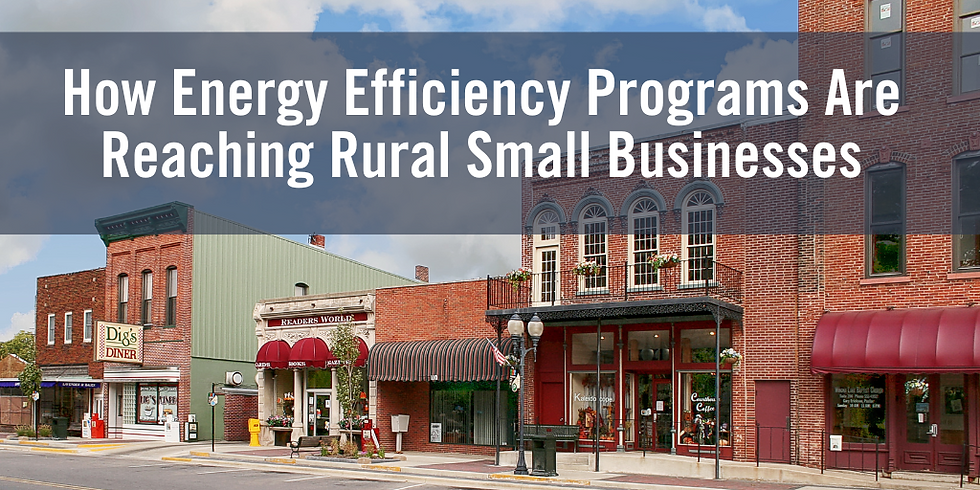Embracing the Future: How Grid-Interactive Efficient Buildings (GEBs) are Revolutionizing Energy Management
- kristinabenson7
- Oct 24
- 4 min read
Updated: Dec 5

Written By: Mitchell Gentry
Grid-Interactive Efficient Buildings (GEBs) are revolutionizing how buildings engage with the electrical grid, offering a dynamic and flexible solution to modern energy challenges. By seamlessly integrating energy efficiency strategies with advanced smart technologies, GEBs allow buildings to actively monitor and adjust their energy usage in response to real time grid conditions, utility pricing signals, and the specific needs of occupants. This interconnected approach optimizes energy consumption, reduces costs for building owners, and enhances grid performance; making buildings more energy efficient while supporting grid stability and contributing to broader sustainability goals.
Key Characteristics of GEBs:
The key characteristics of Grid-Interactive Efficient Buildings lie in their ability to combine energy efficiency with advanced smart technologies to create flexible and responsive energy systems. GEBs incorporate high performance building designs and appliances that significantly reduce energy consumption while leveraging connectivity to enable two-way communication between the building and the grid. This real-time exchange allows buildings to adjust their energy usage based on grid conditions, utility pricing signals, and occupant needs. Through the use of smart technologies such as sensors, controls, and analytics, GEBs optimize the operation of systems like HVAC, lighting, and on-site energy generation. Their flexibility enables dynamic adjustments in energy loads such as load shedding or shifting to support grid stability and maximize efficiency, ultimately reducing costs and enhancing both building performance and grid resilience.

Source: energy.gov/geb
Benefits of GEBs:
Cost Savings: By leveraging advanced energy management systems and participating in demand response programs, building owners can significantly reduce utility bills. GEBs can automatically adjust energy consumption during peak periods, when electricity prices are highest, by shifting or curtailing non-essential loads. Additionally, the integration of onsite renewable energy generation, such as solar panels or energy storage, allows buildings to reduce reliance on grid power, further lowering costs while potentially earning incentives through utility programs designed to promote energy efficiency.
Enhanced Grid Reliability: GEBs enhance the resilience of the electrical grid by acting as flexible resources that can respond to fluctuations in supply and demand. During times of peak demand or grid stress, GEBs can reduce or shift energy consumption to alleviate pressure on the grid. They can also provide services like frequency regulation, voltage support, and load balancing, helping utilities manage grid stability more effectively. This active participation not only ensures reliable energy delivery but also reduces the need for costly infrastructure upgrades to support peak load conditions.
Environmental Sustainability: GEBs contribute to environmental sustainability by reducing overall energy consumption and integrating renewable energy sources such as solar, wind, and energy storage systems. Through efficient energy use, GEBs lower the demand for electricity generated from fossil fuels, which helps decrease greenhouse gas emissions. Additionally, by aligning energy usage with times of renewable energy availability (e.g., using energy during sunny or windy periods), GEBs maximize the use of clean energy, further mitigating the environmental impact of building operations and supporting the transition to a more sustainable energy system.
Challenges of Implementing GEBs:
Technical Complexity: Integrating building systems like HVAC, lighting, and energy storage with advanced smart technologies is highly complex. Ensuring interoperability between devices, managing real time communication with the grid, and addressing data privacy and cybersecurity concerns are significant technical hurdles. Additionally, retrofitting older buildings with modern systems can be particularly challenging.
Financial Barriers: The high upfront costs of installing GEB technologies, including smart controls and energy storage, can be a deterrent for building owners. Return on investment may be uncertain, especially in areas with low energy prices. Moreover, many regions lack sufficient incentives or utility programs to offset these costs.
Policy and Stakeholder Engagement: Regulatory inconsistencies and outdated policies often limit the widespread adoption of GEBs. Building owners may face challenges participating in demand response or energy markets due to these barriers. Furthermore, successful implementation requires coordinated efforts among utilities, policymakers, and tenants to align interests and ensure occupant comfort while achieving energy goals.
Although the challenges associated with implementing Grid Interactive Efficient Buildings are substantial, they are not insurmountable. By fostering innovation in technology and system integration, developing robust and consistent policies to incentivize adoption, and encouraging collaboration among stakeholders including building owners, utilities, policymakers, and occupants these obstacles can be effectively addressed. Such coordinated efforts have the potential to unlock the transformative power of GEBs, enabling them to revolutionize energy management. By optimizing energy efficiency, enhancing grid resilience, and reducing environmental impact, GEBs can play a pivotal role in creating a more sustainable and adaptable energy future.
Adopting Grid-Interactive Efficient Buildings is more than just a smart choice. It is a powerful, forward-thinking strategy that will shape the future of energy. By integrating GEB technologies, we are unlocking the full potential for significant economic and environmental benefits that extend far beyond individual buildings. These innovations allow us to optimize energy consumption, reduce costs, and simultaneously enhance grid reliability, making energy use not only more efficient but also more flexible. GEBs play a critical role in the global shift towards cleaner, more sustainable energy systems by reducing reliance on fossil fuels and supporting the integration of renewable resources. This evolution of energy management not only meets today’s needs but also positions us for long-term resilience, ensuring the grid can adapt to future demands. With GEBs at the forefront, we are laying the groundwork for an energy landscape that is more adaptable, sustainable, and prepared to meet the challenges of tomorrow, driving us closer to a cleaner, more efficient future.
Citations:
Connected Communities - Grid-Interactive Efficient Buildings (GEBs) Lawrence Berkeley National Laboratory. "Grid-Interactive Efficient Buildings (GEBs)." Connected Communities, https://connectedcommunities.lbl.gov/resources/general-information/grid-interactive-efficient-buildings-gebs. Accessed 17 Jan. 2025.
SFTool - Grid-Interactive Efficient Buildings General Services Administration. "Grid-Interactive Efficient Buildings." SFTool: Sustainable Facilities Tool, https://sftool.gov/learn/about/638/grid-interactive-efficient-buildings. Accessed 17 Jan. 2025.
DOE Grid-Interactive Efficient Buildings Fact Sheet U.S. Department of Energy. "Grid-Interactive Efficient Buildings Fact Sheet." Office of Energy Efficiency and Renewable Energy, https://www.energy.gov/eere/buildings/articles/grid-interactive-efficient-buildings-fact-sheet. Accessed 17 Jan. 2025.





Comments